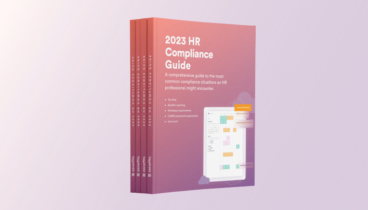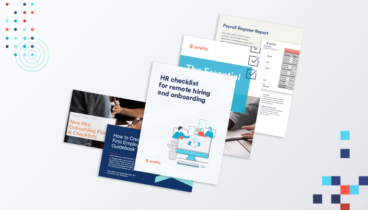It may be new or confusing to some, but what is parental leave, exactly? Who can take it, for how long, and how does it benefit employees and companies?

A keen understanding of workplace benefits can help both employers and employees. By knowing what’s available and how to access it, people can make the best decisions for themselves and their workplaces. For many employees, decision-making also factors in growing families. Therefore, they must consider the value and availability of parental leave.
A 2022 report by the Kaiser Family Foundation found that 43% of women surveyed said their employers offer a paid parental leave benefit.¹ Whether or not it’s paid, the benefit still has value. But what is parental leave, exactly? Who can take it? How long does this type of leave of absence last? And how does parental leave differ from other types of leave? Here we’ll explore several aspects of parental leave, including what it is, how it works, and its importance to employers and employees.
What is parental leave?
A protected leave period that’s available to employed parents is known as parental leave. Often, it’s associated with the arrival of a new child and referred to as maternity leave and paternity leave. It’s typically available to eligible employees surrounding the birth, adoption, or foster placement of a child. In some cases, the benefits may extend past welcoming a new child to the family.
Parental leave policies can vary dramatically by company. Some public and private employers may integrate it with general family leave.
When can an employee take parental leave?
New parents can usually take parental leave during the time shortly before and after the arrival of a new child. Parents of children older than infants also have continuing, and sometimes unpredictable, parental obligations. Short periods of time off for such things as children’s medical appointments, educational needs, and sick days typically don’t constitute extended leave of absence. But the need to care for a child with a more serious or health condition, injury, or other situation might. In those cases, leave might fall under parental leave, family leave, or a combination.
While companies have different policies regarding parental leave benefits, eligibility requirements often involve:
- How long expectant mothers or fathers have been employed at the company.
- The employer’s size.
- Company policies regarding leave for care of new and growing children and attention to their educational, medical, and ongoing needs.
Paid vs. unpaid parental leave
There are no national paid parental leave laws in the United States (although some other countries do have them). But the Family and Medical Leave Act (FMLA) requires that covered U.S. employers provide “eligible employees” with job-protected, unpaid leave for qualified medical and family reasons. Maternity and paternity leave fall into this category. In addition, some states have enacted their own paid family leave (PFL) policies.
Employers may also offer paid family leave to care for a new child as part of their total compensation package. This benefit entitles workers to full or partial pay for a pre-set time period surrounding a child’s birth or adoption. Sometimes employees may decide to take all the leave at once, or take a few days at a time over a longer period.
How does parental leave work?
While no statutory parental leave exists in the U.S., nor is this government-mandated leave per se, employers must remain compliant with FMLA. Those who are not may incur fines and other penalties for FMLA mismanagement.
Beyond that, many aspects of both unpaid and paid leave for new parents are negotiable between the employee and employer.
Employees should start the information-gathering process by talking with their human resources department far in advance. Prepare questions to ask HR about paternity or maternity leave. Discuss the options. Determine eligibility, advance notice period, the time off allowed, and whether it will be paid or unpaid. When it’s needed, employees should speak with their direct superior to work out a plan for covering their responsibilities during the leave.
Why do companies offer parental leave?
Companies offer parental leave for both legal and practical reasons. Those who must comply with FMLA do so by offering job-protected parental leave to their employees who qualify. Others offer FMLA-like benefits even if not required. Some employers go further by providing a paid parental leave policy to:
- Maintain competitiveness with other employers.
- Attract top talent.
- Demonstrate their commitment to employee work-life balance.
Current parental leave policies include both parents in a nod to gender equality.
Advantages of parental leave
There are far-reaching benefits associated with parental leave for new, adoptive, and foster parents. These include advantages for both employees and companies.
Why employees need parental leave
Parental leave positively impacts many employees by:
- Reducing their stress, knowing their livelihood is protected during time away from work.
- Providing time for them to bond with their foster, adopted, or newborn child.
- Offering an adjustment period for a new addition to the family.
- Giving new mothers time to physically heal after giving birth.
- Helping families to gradually acclimate to balancing work and life with a new child.
Paid time off adds the benefit of reduced concern about finances while they’re enjoying their new family addition.
How companies benefit from parental leave
Parental leave benefits employers, too.
- It helps build employee loyalty toward the organization.
- It can reduce employee turnover as parents don’t need to quit to spend time with their new child.
- It fosters a caring culture by which employees and their personal lives are respected and valued.
Making the most of parental leave
Parents can maximize the positive impact and share parental leave in various ways.
- Plan as far ahead as possible to avoid worrying about work.
- Financially budget for the leave period, especially if it’s unpaid.
- Figure out a family routine for when you return to work after parental leave.
- Take time to care for yourself and your family.
- Strive to make the most of paternity and/or maternity leave using a combination of concurrent and consecutive leave periods. Strategically coordinated, this can further the supportive effects of joint parenting, then extend overall leave duration by 1 parent at a time.
Taking parental leave is within eligible employees’ rights. Whether it’s taken paid or unpaid, parental leave is beneficial to both new parents and their employers in numerous ways. Employees should approach parental leave proactively and as far in advance as possible to help others prepare for their absence. Employers should work with the employee to address or mitigate issues frequently associated with an employee’s extended absence.
Business, like life, is a journey. And we’re with you along the way. Check back daily for ongoing tips, tools, and resources for career, HR, and business management.




